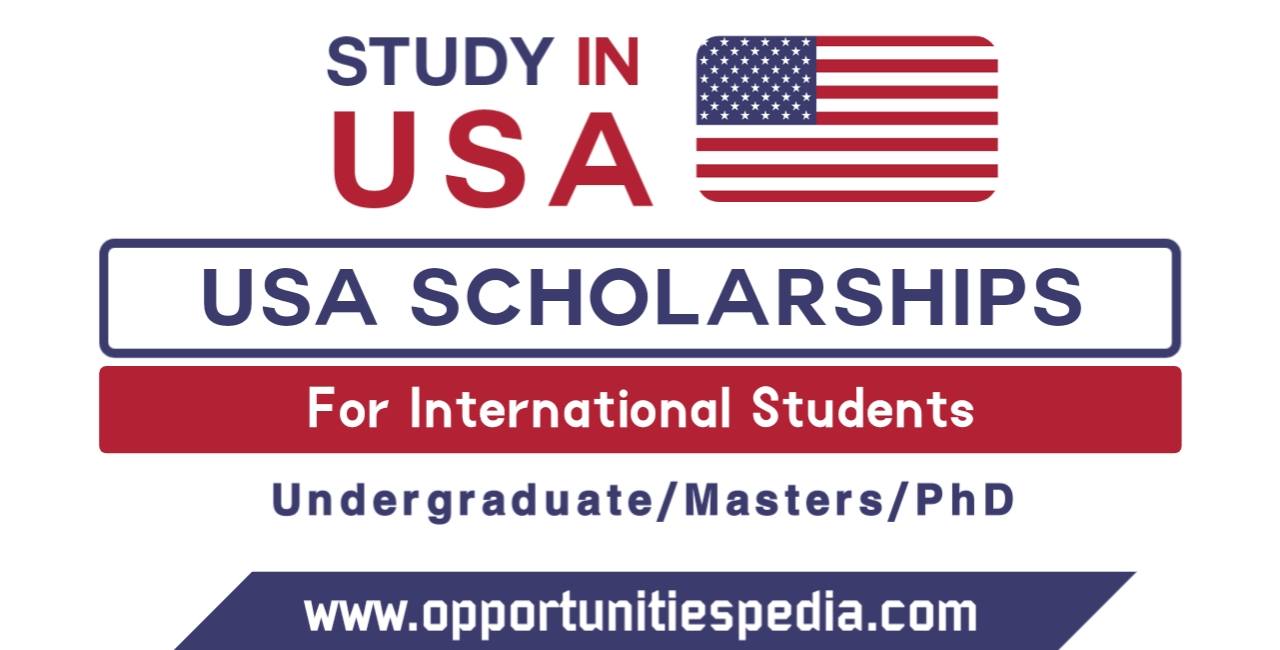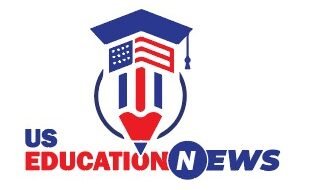Scholarship programs for international students in the USA offer financial assistance to help cover tuition and living expenses. These scholarships come from various sources, including universities, private organizations, and government agencies.
Studying in the USA can be a life-changing experience for international students. The country is home to world-class universities and diverse cultures. However, the cost of education can be daunting. Scholarships provide vital support, enabling students to pursue their academic goals without the burden of overwhelming debt.
Various types of scholarships exist, including merit-based, need-based, and specific awards for certain fields of study. Students should research and apply early to maximize their chances of receiving funding. With the right scholarship, studying in the USA becomes more accessible and affordable, opening doors to new opportunities and experiences.
Scholarship Programs For International Students in USA

Table of Contents
Types Of Scholarships
Scholarship programs for international students in the USA offer financial aid to help with education costs. Understanding the types of scholarships available is essential. Scholarships can ease the burden of tuition fees and living expenses. They can be classified into several categories. Here, we explore three main types: merit-based, need-based, and sports scholarships.
Merit-based Scholarships
Merit-based scholarships reward students for their academic achievements or talents. These scholarships do not consider financial need. They recognize hard work and excellence in various fields. Here are some key features:
- Eligibility: High academic scores, special talents, or leadership skills.
- Application Process: Typically requires transcripts, recommendation letters, and essays.
- Renewability: Many are renewable for each academic year based on performance.
Some examples of merit-based scholarships include:
| Scholarship Name | Eligibility Criteria | Award Amount |
|---|---|---|
| Fulbright Program | Outstanding academic record | Varies |
| Dean’s List Scholarships | Top GPA in the program | $1,000 – $10,000 |
These scholarships encourage students to maintain high academic standards. They also motivate involvement in community service and extracurricular activities.
Need-based Scholarships
Need-based scholarships support students who demonstrate financial need. These scholarships consider the student’s family income and expenses. They aim to make education accessible for everyone. Here are important points:
- Eligibility: Based on financial situation and family income.
- Application Process: Requires financial documents and sometimes personal statements.
- Impact: Reduces the financial burden for low-income students.
Examples of need-based scholarships include:
| Scholarship Name | Eligibility Criteria | Award Amount |
|---|---|---|
| Pell Grant | Low-income undergraduate students | Up to $6,495 |
| Federal Supplemental Educational Opportunity Grant (FSEOG) | Students with exceptional financial need | $100 – $4,000 |
These scholarships help students focus on studies instead of finances. They promote equal opportunities for all students.
Sports Scholarships
Sports scholarships reward talented athletes. These scholarships help students play sports while pursuing their education. Schools look for students who excel in sports. Here are some key aspects:
- Eligibility: Outstanding performance in a specific sport.
- Application Process: Usually involves athletic resumes and performance videos.
- Commitment: Recipients may need to participate in team activities.
Examples of sports scholarships include:
| Scholarship Name | Eligibility Criteria | Award Amount |
|---|---|---|
| NCAA Scholarships | Student-athletes in NCAA sports | Varies |
| NAIA Scholarships | Student-athletes in NAIA sports | Varies |
These scholarships not only help with tuition but also encourage athletic skills. They provide opportunities for personal growth and teamwork.
Eligibility Criteria
Scholarship programs for international students in the USA offer incredible opportunities. These programs help students from around the world pursue their studies. However, each scholarship has its own eligibility criteria. Understanding these criteria is crucial for aspiring scholars. It can be the difference between securing a scholarship and missing out.
Academic Requirements
Academic requirements vary depending on the scholarship. Generally, students need to provide proof of their previous academic achievements. This includes transcripts and certificates. Here are some common academic criteria:
- Minimum GPA: Most scholarships require a GPA of 3.0 or higher.
- Previous Degrees: Some scholarships are only for undergraduate or graduate students.
- Field of Study: Certain scholarships focus on specific fields like STEM or humanities.
Some scholarships may also require standardized test scores. Here’s a simple table to understand typical academic requirements:
| Scholarship Type | Minimum GPA | Test Scores Required |
|---|---|---|
| Undergraduate | 3.0 | SAT/ACT |
| Graduate | 3.5 | GRE/GMAT |
Students should focus on maintaining strong academic performance. This is essential for scholarship eligibility.
Language Proficiency
Language proficiency is crucial for international students. Most American universities require proof of English skills. Tests like the TOEFL or IELTS are commonly accepted. Here are some key points regarding language proficiency:
- Minimum Scores: Most scholarships require a TOEFL score of at least 80.
- IELTS Scores: An IELTS score of 6.5 is often required.
- Exemptions: Students from English-speaking countries may be exempt.
It’s important to check specific requirements for each scholarship. Some scholarships may require additional language tests or interviews. Being proficient in English can greatly enhance your scholarship chances.
Age Limits
Age limits play a role in scholarship eligibility. Some scholarships have specific age requirements. Here are common age-related criteria:
- Undergraduate Scholarships: Typically for students aged 18 to 25.
- Graduate Scholarships: Generally open to students up to 30 years old.
- Special Scholarships: Some programs target non-traditional students of any age.
Age limits ensure that scholarships support students at the right stage in their education. Always verify age requirements for each program. This can help avoid disappointments during the application process.
Top Scholarship Programs
Scholarship programs for international students in the USA offer amazing opportunities. They help students achieve their academic goals without the burden of high tuition fees. Many programs support various fields of study. Here are some of the top scholarship programs you should know about.
Fulbright Program
The Fulbright Program is one of the most prestigious scholarships. It encourages cultural exchange and collaboration. Here are key details:
- Eligibility: Open to students, scholars, and professionals.
- Fields: Available in various fields, including arts and sciences.
- Duration: Scholarships typically last for one academic year.
This program provides funding for:
| Type of Funding | Details |
|---|---|
| Tuition Fees | Full coverage for tuition costs. |
| Travel Expenses | Round-trip airfare provided. |
| Living Stipend | Monthly allowance for living expenses. |
Students also gain cultural experience and networking opportunities. The Fulbright Program is a great choice for passionate learners.
Chevening Scholarships
The Chevening Scholarships are funded by the UK government. They aim to develop future leaders worldwide. Here are the main features:
- Eligibility: Open to students with leadership potential.
- Fields: Covers a wide range of subjects.
- Duration: Typically lasts for one year.
Key benefits include:
| Funding Type | Details |
|---|---|
| Tuition Fees | Full tuition coverage. |
| Travel Expenses | Travel costs reimbursed. |
| Living Costs | Monthly stipend for living expenses. |
Chevening also offers networking events and personal development courses. This program is ideal for ambitious students eager to make a difference.
Aauw International Fellowships
The AAUW International Fellowships support women pursuing advanced studies. This program promotes education and equity for women. Here are the essentials:
- Eligibility: Open to women from all countries.
- Fields: Available for graduate and postgraduate study.
- Duration: Fellowships typically last for one year.
Benefits include:
| Funding Type | Details |
|---|---|
| Scholarship Amount | Varies based on degree level. |
| Travel Costs | Can be partially covered. |
| Networking | Access to a global community of women. |
AAUW fosters a supportive environment for women to thrive academically. This fellowship promotes female empowerment in education.
Application Process
Scholarship programs for international students in the USA provide vital financial aid. They help students achieve their dreams of studying abroad. Understanding the application process is essential for success. This process includes gathering required documents, adhering to timelines, and following submission guidelines. Each step is critical for securing a scholarship.
Required Documents
Gathering the right documents is crucial for your scholarship application. Each scholarship may have specific requirements. Here is a list of common documents needed:
- Application Form: Complete this form carefully.
- Academic Transcripts: Provide records from previous schools.
- Letters of Recommendation: Obtain two or three letters.
- Personal Statement: Write about your goals and achievements.
- Proof of English Proficiency: Use tests like TOEFL or IELTS.
- Financial Documents: Show proof of need.
Some scholarships may require additional documents. Here’s a table summarizing the basic requirements:
| Document | Description |
|---|---|
| Application Form | Filled out completely with accurate information. |
| Transcripts | Official records from your school. |
| Recommendations | Written by teachers or mentors. |
| Personal Statement | Discuss your aspirations and experiences. |
Timeline
Each scholarship program has specific timelines. Knowing these dates helps you stay organized. Here is a general timeline:
- Research: Start at least 6 months before applying.
- Prepare Documents: Begin gathering documents 4 months ahead.
- Apply: Submit applications at least 2 months before deadlines.
- Follow Up: Check the status of your application after submission.
Most scholarships have deadlines in the fall or spring. Keep a calendar to track important dates. This helps avoid missing any deadlines and ensures a smooth application process.
Submission Guidelines
Each scholarship has its own submission guidelines. Following these is important for a successful application. Here are common guidelines:
- Online Submission: Many scholarships require online applications. Create an account on their website.
- Format: Follow specified formats for documents, such as PDF or Word.
- Word Count: Adhere to limits for personal statements or essays.
- Proofread: Always check for errors before submission.
Some scholarships may ask for a specific subject line in emails. Always read the instructions carefully. Meeting all guidelines increases your chances of receiving a scholarship.
Funding Coverage
Scholarship programs for international students in the USA offer exciting opportunities. These programs help students cover various costs. Understanding funding coverage is essential. It includes tuition fees, living expenses, and travel grants. Each aspect plays a vital role in ensuring students can focus on their studies.
Tuition Fees
Tuition fees can be a significant part of studying in the USA. They vary by school and program. Here are some important points:
- Public universities often charge lower fees than private ones.
- Graduate programs may have different rates compared to undergraduate ones.
- Some scholarships cover full tuition, while others cover partial tuition.
Here’s a table showing average tuition fees for different types of universities:
| Type of University | Average Tuition Fee (per year) |
|---|---|
| Public University | $10,000 – $30,000 |
| Private University | $30,000 – $60,000 |
| Community College | $3,000 – $15,000 |
Many scholarships focus on tuition fees. Students should research options that fit their needs. Scholarships can reduce financial stress and help students succeed.
Living Expenses
Living expenses are another crucial part of studying abroad. They include costs for food, housing, and transportation. These expenses can vary based on location and lifestyle. Here are some key points:
- Living in a city is usually more expensive than in rural areas.
- Shared housing can help reduce costs.
- Students should budget for everyday expenses.
The following table shows average monthly living expenses:
| Expense Type | Average Monthly Cost |
|---|---|
| Rent | $500 – $1,500 |
| Food | $200 – $400 |
| Transportation | $50 – $150 |
Some scholarships include living expenses. This coverage allows students to focus on their studies. Careful budgeting can help manage costs effectively.
Travel Grants
Travel grants are essential for international students. They help cover the cost of flights and travel-related expenses. Many students face high travel costs when moving to the USA. Here are some key aspects:
- Travel grants can cover round-trip airfare.
- Some scholarships offer a fixed amount for travel costs.
- Grants may also help with visa expenses.
Here’s a table showing possible travel grant amounts:
| Grant Type | Amount |
|---|---|
| Round-Trip Airfare | $800 – $1,500 |
| Visa Expenses | $200 – $500 |
Travel grants can ease the financial burden. They allow students to focus on their education from day one. Researching options for travel grants can lead to significant savings.
Tips For Success
Scholarship programs for international students in the USA offer amazing opportunities. They help students achieve their dreams of studying abroad. Success in these programs requires careful planning and effort. Here are some essential tips to help you succeed.
Crafting A Strong Personal Statement
Your personal statement is your chance to shine. It tells your story and shows why you deserve the scholarship. Here are some tips to create a strong statement:
- Be Authentic: Share your true self. Write in your own voice.
- Highlight Achievements: Mention your academic, personal, and professional accomplishments.
- Explain Your Goals: Describe your future plans and how the scholarship helps.
- Show Passion: Express your enthusiasm for your chosen field of study.
Use this simple structure:
- Introduction: Briefly introduce yourself.
- Body: Discuss your experiences, achievements, and goals.
- Conclusion: Summarize why you are a good fit.
Remember to proofread. Check for grammar and spelling mistakes. Ask a friend or teacher to read it too. A strong personal statement can set you apart from other applicants.
Securing Recommendations
Strong recommendations can boost your scholarship application. Choose people who know you well and can speak positively about you. Here are some tips:
- Select Wisely: Pick teachers, mentors, or supervisors who can highlight your strengths.
- Provide Information: Give your recommenders your resume and details about the scholarship.
- Ask Early: Approach them well in advance. This gives them time to write a thoughtful letter.
- Follow Up: Remind them politely about the deadline.
Consider these points for a successful recommendation:
| Action | Tip |
|---|---|
| Ask in Person | Make your request personal and respectful. |
| Share Your Aspirations | Help them understand your goals and why you need the scholarship. |
| Thank Them | Always express gratitude for their support. |
A great recommendation can make a big difference in your application.
Meeting Deadlines
Staying organized is key to successful scholarship applications. Missing deadlines can cost you opportunities. Here are tips to help you meet all deadlines:
- Create a Timeline: List all deadlines for applications, essays, and recommendations.
- Set Reminders: Use your phone or calendar to remind you of important dates.
- Break Tasks Down: Divide large tasks into smaller, manageable steps.
- Stay Focused: Avoid distractions when working on your applications.
Use this simple checklist:
- Read the scholarship requirements carefully.
- Prepare your documents early.
- Double-check everything before submission.
By managing your time well, you increase your chances of success.
Challenges Faced
Scholarship programs for international students in the USA provide amazing opportunities. Yet, many students face challenges. These challenges can affect their study experience. Understanding these hurdles is crucial for success.
Cultural Adjustment
Moving to a new country is exciting but can also be tough. International students often struggle with cultural adjustment. They encounter different customs, languages, and social norms. This can feel overwhelming.
Some common issues include:
- Language barriers
- Different classroom environments
- Homesickness
- Social isolation
Students may find it hard to make friends. They might miss their families and home countries. This emotional struggle can impact their studies. Many universities offer support services. These services help students adapt to their new environment.
Here’s a quick overview of support options:
| Support Type | Description |
|---|---|
| Orientation Programs | Introduces students to campus life. |
| Peer Mentoring | Pairs new students with experienced ones. |
| Cultural Events | Encourages interaction among diverse students. |
Visa Issues
Visa issues can create serious problems for international students. Obtaining a student visa requires many steps. Students must provide proof of acceptance, financial support, and more.
Common visa-related challenges include:
- Understanding visa regulations
- Delays in processing applications
- Maintaining visa status
- Renewal challenges
Missing a deadline can lead to a visa rejection. Students should stay informed about their visa status. Universities often have international offices to help. These offices guide students through the visa process.
Here’s a simple checklist for visa application:
- Receive acceptance letter from a university.
- Pay the SEVIS fee.
- Fill out Form DS-160.
- Schedule a visa interview.
- Prepare required documents.
Financial Constraints
Financial constraints are a big challenge for many international students. Tuition fees in the USA can be high. Scholarship programs help, but they may not cover all expenses.
Students face costs such as:
- Tuition and fees
- Housing and utilities
- Food and groceries
- Transportation
Many students work part-time to support themselves. Balancing work and study can be tough. Some students may have to take loans, leading to debt.
Here are some tips to manage finances:
- Create a budget.
- Explore on-campus jobs.
- Look for additional scholarships.
- Share housing to reduce rent.
Understanding financial obligations is vital. Planning ahead can ease this burden.

Resources For Students
Scholarship programs for international students in the USA offer many benefits. They provide financial aid, making education affordable. Resources for students are crucial in finding the right scholarships. These resources help students navigate their options and apply successfully.
Scholarship Databases
Finding scholarships can be challenging. Scholarship databases simplify the process. They compile various scholarship opportunities in one place. Here are some popular scholarship databases:
- Fastweb: A leading scholarship search engine.
- College Board: Offers a comprehensive scholarship search tool.
- Cappex: Connects students with scholarships and colleges.
Using these databases allows students to:
- Search by eligibility criteria.
- Receive personalized scholarship matches.
- Access application tips and deadlines.
Many databases also offer tools for tracking applications. This ensures students never miss a deadline. With the right database, students can maximize their chances of securing funding.
University Support Services
Many universities provide support services for international students. These services help students find and apply for scholarships. Common support services include:
- Financial Aid Offices: Staff assists with financial questions.
- International Student Offices: Offer guidance specific to international students.
- Workshops: Conduct sessions on scholarship applications.
These offices often host events to connect students with scholarship providers. They may also provide:
| Service | Description |
|---|---|
| Advising Sessions | One-on-one help with scholarship applications. |
| Resource Centers | Access to brochures and online resources. |
Utilizing university support services can significantly increase scholarship success. Students should actively seek help from these resources.
Online Forums
Online forums are valuable resources for international students. They provide a platform to share experiences and advice. These forums often feature discussions about scholarships. Popular online forums include:
- Reddit: Subreddits dedicated to scholarships and education.
- College Confidential: A forum for college-related discussions.
- International Student Forum: Focused on the needs of international students.
Forums allow students to:
- Ask questions about specific scholarships.
- Share tips on applications and interviews.
- Connect with other students for support.
Engaging in these forums can lead to valuable insights. Students can learn from others’ successes and challenges. Building a network through online forums can enhance scholarship opportunities.
Conclusion
Pursuing education in the USA can be a life-changing experience for international students. Scholarship programs offer vital financial support to help achieve academic goals. Exploring these opportunities can open doors to prestigious institutions and diverse cultures. Start your journey today and make the most of the educational resources available to you.

